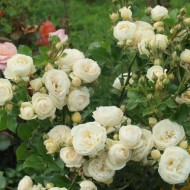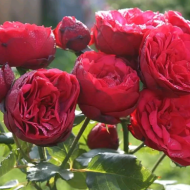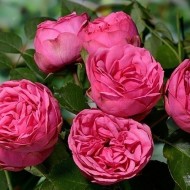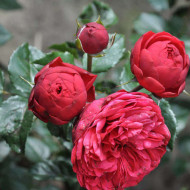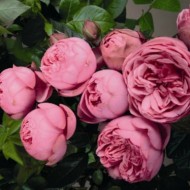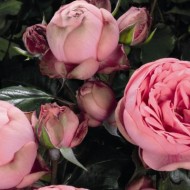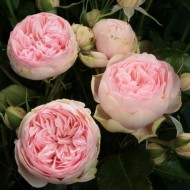Secrets of growing Piano hybrid tea rose
Content
Breeding history
Ever since tea pink varieties came into vogue in different countries, gardeners have been greatly annoyed by the inherent disadvantages of the culture - weak immunity to diseases and attractiveness to insect pests. As a result, growing bushes became difficult, time-consuming and labor-intensive.
To facilitate the work of flower growers, breeders began to breed hybrids that were devoid of these shortcomings, but inherited the best varietal qualities. The progenitors of new hybrids were tea cultures, as well as roses of other types, not so beautiful, but possessing the necessary technical qualities.
German breeders achieved a good result, having bred the pink Piano variety in 2007, later they added the Red Piano bailiff to the name. Then new varieties of the same series appeared, but the first result immediately attracted everyone's attention.
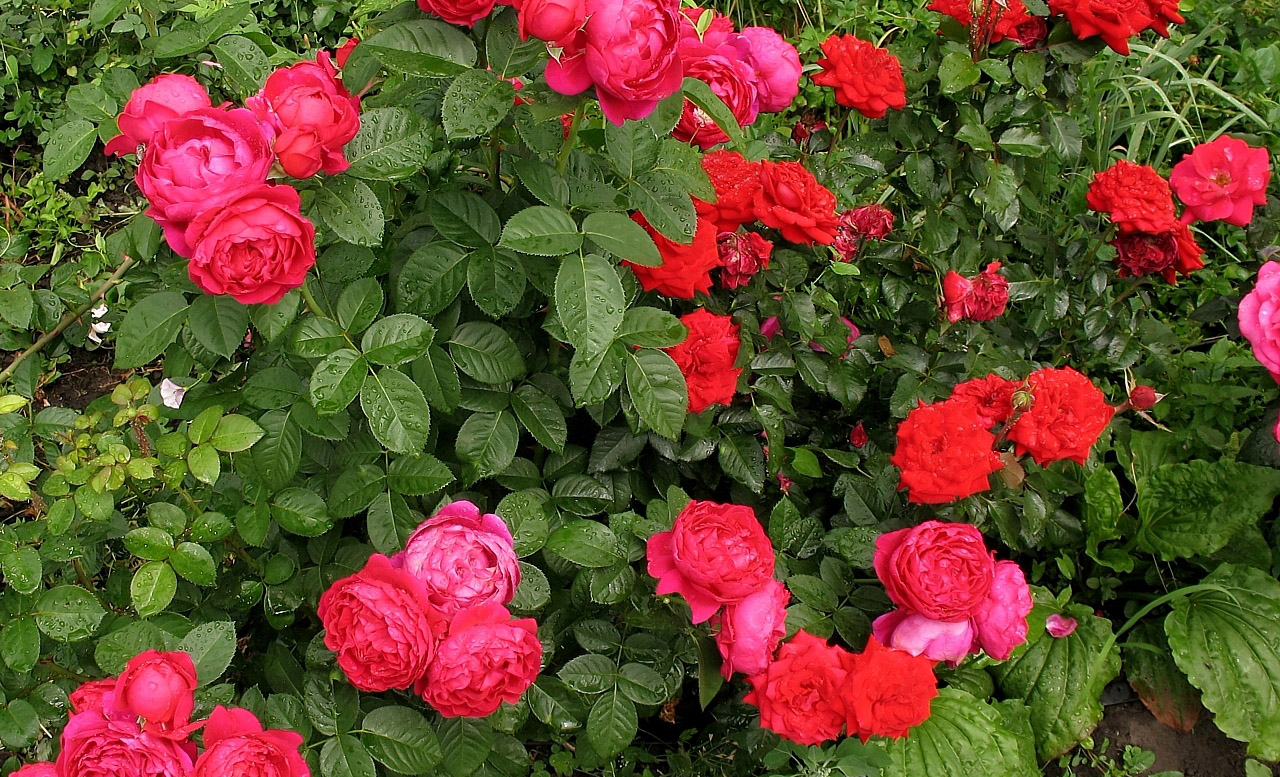
Description of culture
All hybrid tea varieties of the Piano series have similarities in appearance:
- The bushes are medium-sized, the maximum height is 1.2 m. The width varies depending on the variety, ranging from 60 cm to 1 m. The crown is spherical.
- The leaves are deep green, dense, leathery, with a glossy shade.
- Peduncles form at the ends either single buds or inflorescences of 3–8 pieces.
- The flowers are massive, the diagonal size varies from 10 to 20 cm. When fully expanded, it takes a bowl-shaped shape, formed by many petals.
- The flowering period begins in early summer and lasts until autumn. Flowering is continuous, abundant.
But the main thing is that the breeders managed to solve most of the problems associated with the cultivation of crops. Varieties of the Rose Piano family:
- have increased immunity to common flower ailments;
- frost-resistant;
- do not lose their attractive appearance during heavy rainfall;
- do not fade in bright sunlight.

Varieties
Later, breeders presented to the public a series of pink varieties derived from the Piano. The color of the buds ranges from light pink to maroon.
Let's give a brief description of the varieties:
- Wedding Piano (Wedding). Obtained in 2014. The petals are light white with a creamy admixture, blend well with blue or white flowers.
- Charming Piano The petals are light pink with a greenish tint.
- Piano Frilend (Freeland). The buds are bright scarlet, they evoke a romantic mood.
- Pink Piano (Pink). Possesses a pronounced bright pink color, such flowers are presented to young girls and women, hinting at passionate feelings.
- Bridal Piano (Bridal). The petals are of a pleasant pink hue, the look is light, delicate. Shaded by dark foliage, they look like they are floating in the air.
- Happy Piano (Happy). The buds are colored in a soft, rich pink shade.
- Red Piano (Ed). The petals are rich burgundy, they look especially picturesque. This variety is noted as one of the most attractive rose bushes.
- Wedding Piano
- Red Piano
- Pink piano
- Piano Frilend
- Happy Piano
- Charming Piano
- Bridal piano
Rose Piano at a glance video
This video examines the main varietal characteristics of the flower.
Conditions of detention
Despite the positive technical characteristics obtained from the parent varieties, the Piano needs to be kept up to date. If the flowers are deprived of proper care and the necessary conditions, flowering will not be so abundant or will not start at all.
The landing site is selected in a well-lit place. The petals of the culture are not afraid of direct sunlight, the bushes take root well in light partial shade. The more sunlight, the richer the shade of the buds becomes and the less the risk of fungal infections. Count on the fact that the bushes need to bask in the sun for at least 4 hours a day.
The range of comfortable temperatures for a plant is within + 18-22 ° С, which corresponds to the Russian summer. Nevertheless, temperature drops can negatively affect colors:
- with a strong decrease on cool damp days, flowering slows down;
- in excessive heat (from 26 ° C) with high humidity, the plant is highly likely to suffer from fungal infections.

The culture does not need shelter, if in this area the frosts do not fall below -20 ° C, but in the northern regions of Russia and the middle lane, the bush is necessarily covered for the winter. The air should be neither dry nor too humid. In dry periods, foliage and buds dry out and wither, if they are not cut off, the bush loses its picturesqueness. Peduncles are strong, stable, therefore strong winds are not terrible for the bush. But drafts harm development, so a place for landing is selected closed, but ventilated.
Only fertile soil with drainage is suitable for the variety. The acidity should be weak or neutral. Ideal soils are chernozem or loam.
Landing
The rules and process for planting the described culture is the same as for other pink varieties. First of all, the soil is prepared, then the sowing is carried out. The land must be fed a month before planting, they begin to water. As a result, weeds will be born, which they get rid of before planting. To increase soil fertility, you can add manure, humus or compost.
The landing algorithm is as follows:
- A few hours before the procedure, the seedlings are placed in a growth stimulator.
- A hole is dug under each seedling 50 cm deep and 100 cm wide. Such dimensions contribute to the good rooting of the bush.
- The bottom is drained with small pebbles, crushed stone or pieces of brick, and a layer of sand is poured on top.
- The seedling is set in the hole, the roots are straightened, then they are added dropwise with fertile soil.
- The place is mulched with peat, coniferous mass or sawdust, after which it is watered abundantly.

Growing
A growing bush has to be looked after all the time. This implies:
- watering;
- fertilization;
- sanitary and forming pruning;
- protection from pests and diseases;
- preparation for winter.
Let's analyze the procedures in more detail.
Watering and fertilizing
Shrubs are watered infrequently, only when the root soil begins to dry out. Excess moisture leads to root rot. Before watering, the soil is loosened, giving access to water and oxygen, after which it is mulched. A young bush requires 5–6 liters of water, an adult requires twice as much.
You need to feed the bush several times per season. The scheme is as follows:
- nitrogen fertilizers are applied in May;
- in June - phosphorus-potassium;
- in September - only potash.
Fertilizers are applied according to the doses indicated on the package. Excess leads to premature fall of foliage and the end of flowering.
Pruning a bush
Pruning is carried out, firstly, to give the bush a picturesque shape, and secondly, to get rid of sick buds and shoots that are starting to fade, on which buds have not formed. The operation is carried out throughout the summer, when some shoots begin to spoil the general appearance.
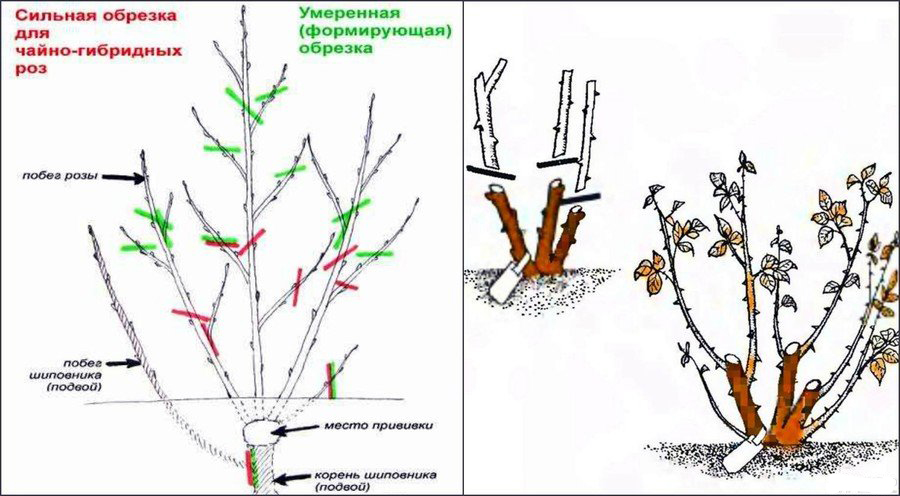
Wintering
In the south of the country, no protection is needed with the arrival of cold weather, since a mature bush can easily tolerate frosts down to –20 ° С. But when disembarking in a northern climate, shelter is required. For this, the base of the bush is additionally sprinkled with spruce branches or sawdust, building a layer of 40 cm. Next, the bush is covered by building a hut of spruce branches.
The most caring gardeners build a low wire frame over the shrubbery and cover the plant with foil. We recommend using polystyrene, because bushes can rot under the film - it is difficult to ensure reliable ventilation.
Diseases and pests
The culture is immune to diseases and insects. However, sometimes the culture is still attacked by pests:
- Aphid infestation can be easily stopped by treating the plant with soapy water or special preparations.
- For beetles, caterpillars and spider mites, special insecticides are used.
Disease prevention doesn't hurt either. It is recommended to use the composition "Epin" or analogs, you can get by with copper sulfate. Every time after heavy rains, it is imperative to carry out sanitary pruning, getting rid of rotting and defective buds.
The use of the Piano rose in landscape design
A hybrid tea rose of the Piano variety is grown for cutting, but often they are used to plant greenery in park alleys and city flower beds. Summer residents decorate their gardens with them. It is advisable to plant a culture in a composition with other perennials, deciduous and coniferous bushes, low trees will become a good background.
The variety is used to decorate verandas and terraces, paths and alleys. It is recommended to plant bushes at the central entrance or gate, where they will immediately attract attention, giving a wonderful mood. If you master a special technique, the bush will be able to give the original sculptural form.
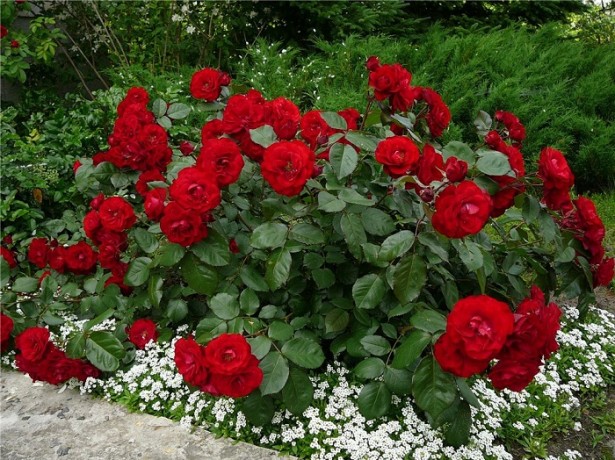
Florist reviews
“In my garden, the Piano rose blooms all summer without interruption. There was not a day without at least one bud on the bushes. Neither rain nor sun harm him. I sprayed it a little against pests, but just in case. The shoots fall apart a little, so I tie them up for beauty. "
“I read the reviews and dropped this beauty off 5 years ago. I didn’t regret it. Winters well, blooms fabulously. Not sick at all! In the bright sun, the petals lighten a little, it would be worth planting in an area with diffused light. "
Experts classify the variety as one of the most picturesque. Flowers attract with a view, create a romantic atmosphere. A little patience, adherence to the rules, and even a novice gardener becomes the owner of beauty that can transform any nondescript site.

